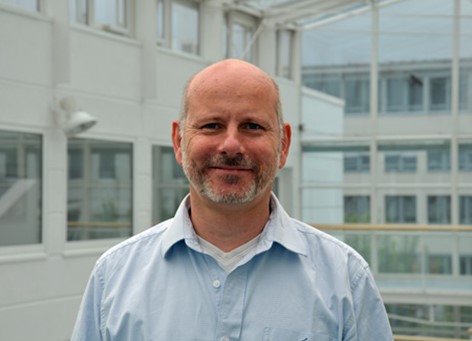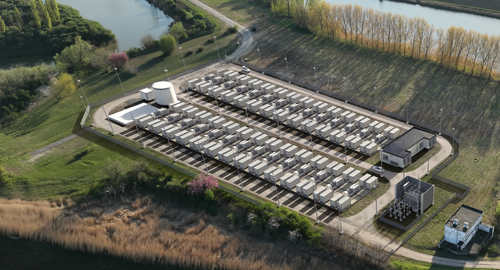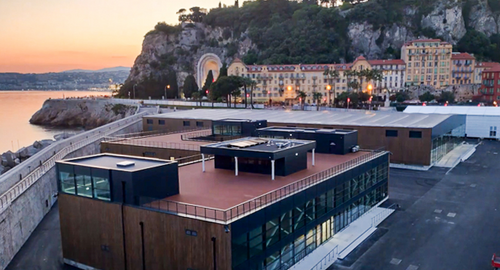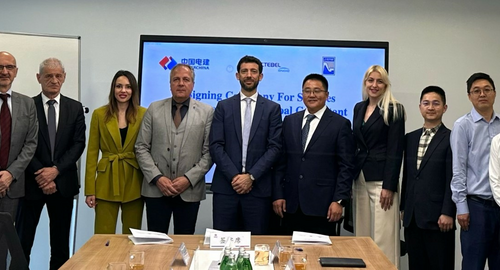
Listen to Engineering Angles, Tractebel's podcast!
In the latest episode of Engineering Angles, we caught up with Neha Bansal, Deputy General Manager of Hydropower & Water Resources in Business Development &...
Trouver plusClimate-neutral hydrogen to provide clean energy for the long term. Our experts are on board as planners at the site of the coal-fired power station at the seaport.
In the medium term, the use of coal as a source of energy will come to an end at KNG’s Rostock power station. Then what? The answer: Hydrogen. At a scale which has never previously been realised in Germany.
It is planned that alongside the existing coal-fired power station, a 100 MW electrolysis plant for the production of climate-neutral green hydrogen will come on stream as soon as late 2026. The electricity required for this may come from offshore wind farms in the Baltic Sea as well as other renewable sources in the region. Parts of the existing power station infrastructure - such as the grid connection or the water supply – could then continue to be used. This would offer the location and the region new prospects for the future.
Energy experts cooperate on a major H2 project
The innovative HyTechHafen Rostock project has applied for funding under the IPCEI (Important Project of Common European Interest) program. It is planned that the bulk of the hydrogen produced will be fed into a transregional gas pipeline network (“doing hydrogen” project) which has yet to be built. The rest would be made available to regional consumers in the area as well via a trailer refuelling station.
Experienced partners are behind the project. The developer is the Rostock EnergyPort cooperation GmbH (REPCO), an alliance of consortium partners EnBW Neue Energien GmbH, RheinEnergie AG, RWE Generation SE and the port operator ROSTOCK PORT GmbH. The final decision on the implementation of the project is expected in 2024.
Expertise in the planning of green energy systems
Our teams from the fields of Gas-to-X and Power Systems have been commissioned by the general engineering services contractor Dornier Power and Heat GmbH. Their expertise includes the planning of the plant and machinery, which covers, among other things, the electrolysers and the hydrogen compressors. Our experts are currently dealing with the initial planning phase. They are working on the basic evaluation, preliminary planning and basic engineering.
A particular challenge here is the scale at which the plant is planned: Starting with 100 MW in the initial phase, expansion to up to 1,000 MW is being assessed. This means that the planned plant engineering must also be scalable. Another challenge is posed by the interfaces with existing and future infrastructure, which already need to be taken into account at the planning stage.
“The planned production of green hydrogen at the HyTechHafen Rostock will make a direct contribution to the decarbonization of industrial processes in Germany. We are pleased to provide our know-how for this innovative project. After all, green hydrogen is a CO2-free source of energy which will make a long-term contribution to climate neutrality,” says Dr. Arne Schäfer, Project Manager at Tractebel.

Dr. Arne Schäfer, Project Manager at Tractebel

In the latest episode of Engineering Angles, we caught up with Neha Bansal, Deputy General Manager of Hydropower & Water Resources in Business Development &...
Trouver plus
Tractebel asssite ENGIE pour construire son deuxième parc de batteries à grande échelle en Belgique, contribuant ainsi à la mise en place d'un système énergétique flexible,...
Trouver plus
Our Urban teams from France and Monaco are leading the design and construction supervision of the Mediterranean Pavilion, ahead of the third United Nations Ocean...
Trouver plus
Our transport infrastructure experts signed a mandate on April 25, 2025, to provide technical services on the first metro project in the Western Balkans. This is our...
Trouver plus